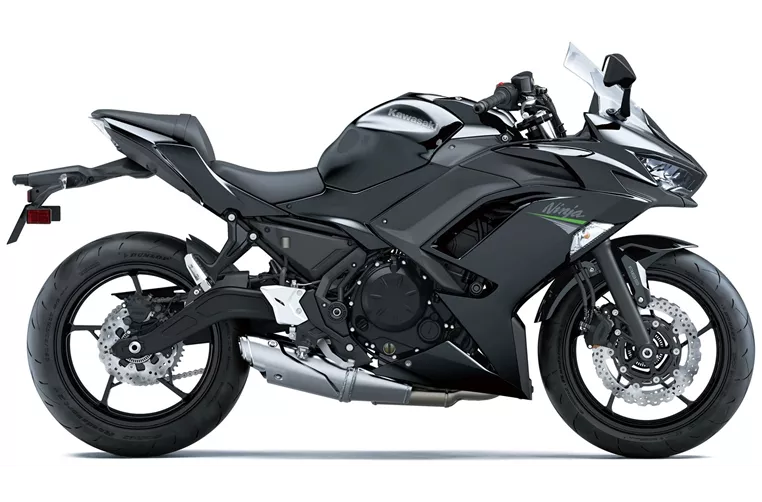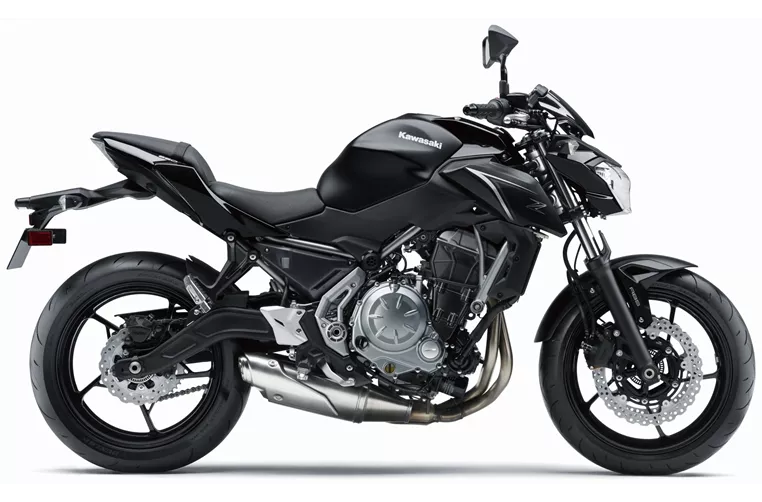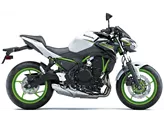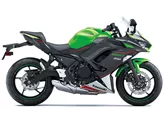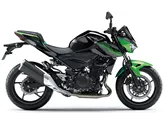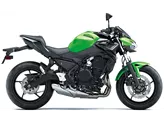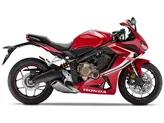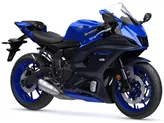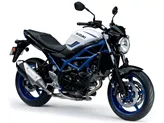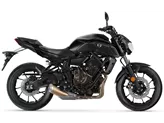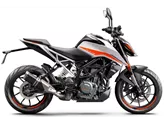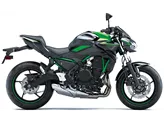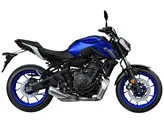Kawasaki Ninja 650 2020 vs. Kawasaki Z650 2017
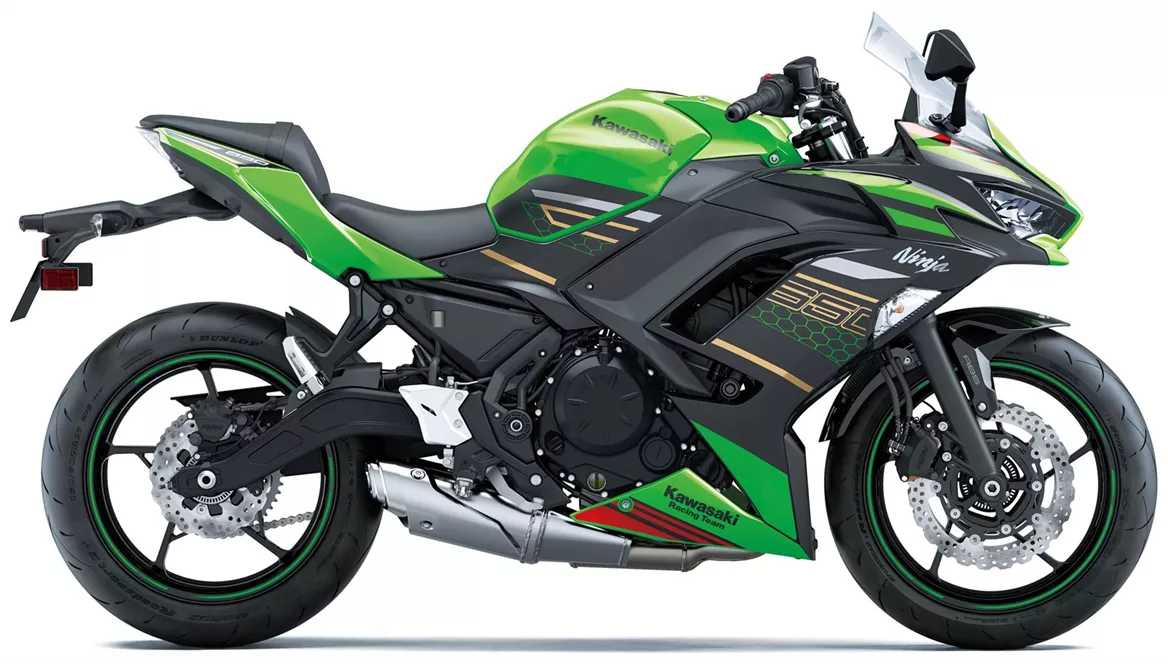
Kawasaki Ninja 650 2020
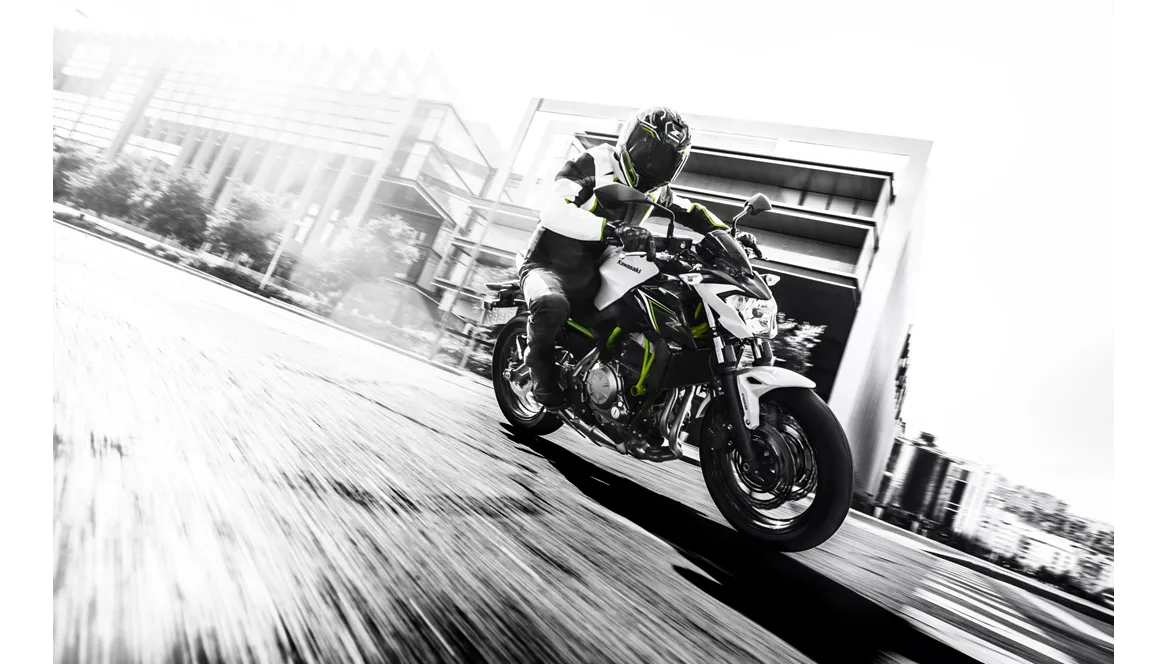
Kawasaki Z650 2017
Overview - Kawasaki Ninja 650 2020 vs Kawasaki Z650 2017
The Kawasaki Ninja 650 model year 2020 and the Kawasaki Z650 model year 2017 share many similarities in terms of technical specifications. They both have an inline engine with a bore of 83 mm and a stroke of 60 mm. The engine power and torque are also the same, with 68.2 HP and 65.7 Nm respectively. Both bikes have a compression ratio of 10.8 and use fuel injection as their fuel system.
In terms of suspension, both the Ninja 650 and the Z650 feature a telescopic fork in the front and a swing arm with a monoshock in the rear. The suspension on both bikes can be adjusted for preload. The chassis of both bikes is made of steel and has a tubular frame. They also have the same rake angle of 65.5 degrees and a trail of 100 mm.
The front brakes on both bikes are double disk with a diameter of 300 mm and double piston calipers. They also feature petal technology for improved cooling. Both bikes are equipped with ABS as an advanced rider assistance system.
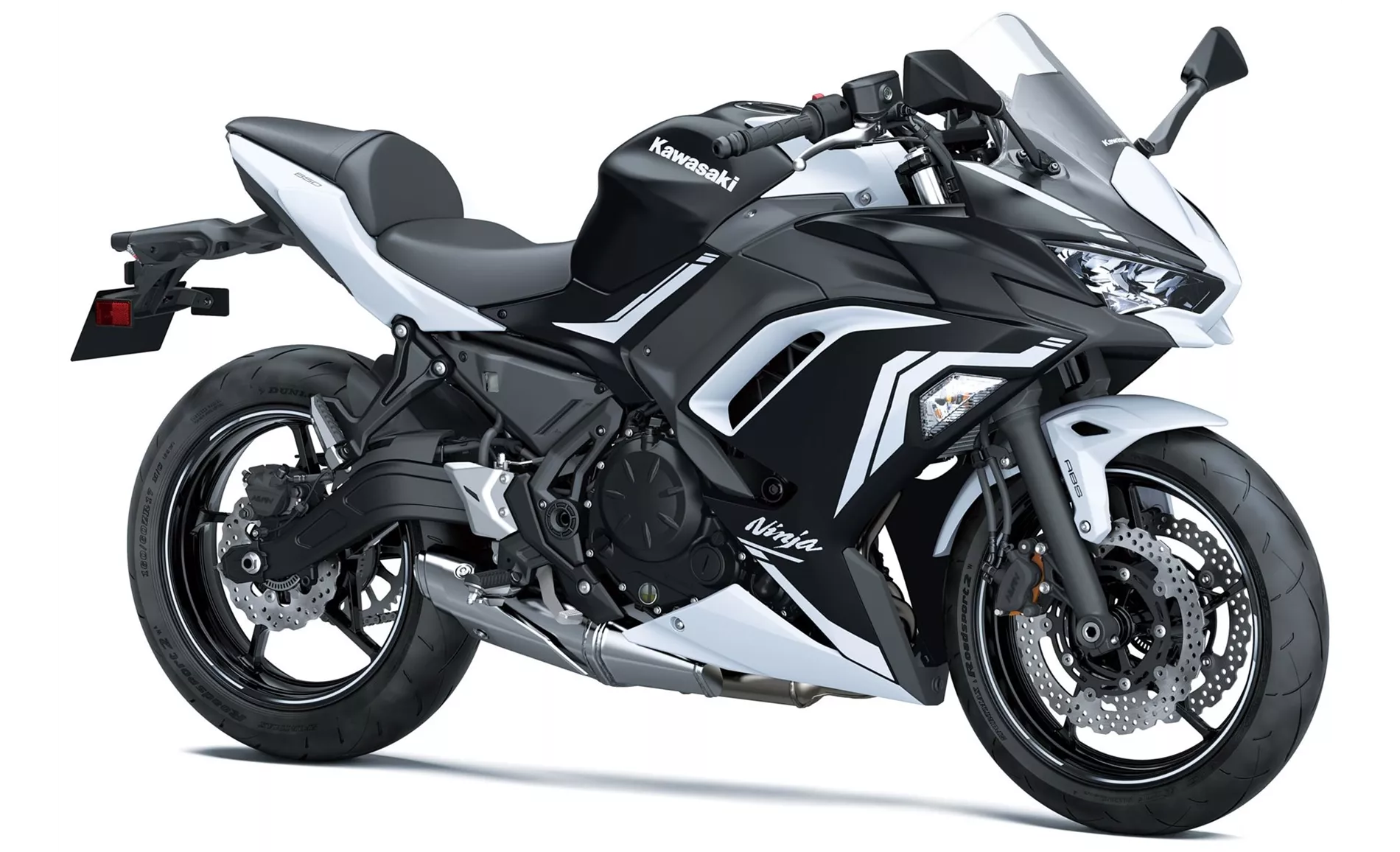
Kawasaki Ninja 650 2020
In terms of dimensions and weights, both bikes have a front tire width of 120 mm and a diameter of 17 inches. The rear tire width is 160 mm and also has a diameter of 17 inches. The wheelbase is 1410 mm and the seat height is 790 mm for both bikes. However, there is a slight difference in the kerb weight with ABS. The Ninja 650 2020 weighs 193 kg, while the Z650 2017 weighs 187.1 kg. Both bikes have a fuel tank capacity of 15 liters.
Now let's discuss the strengths and weaknesses of each bike. The Ninja 650 2020 is one of the last of its kind, as many manufacturers have moved away from producing middleweight sport bikes. It has a powerful two-cylinder engine and a comfortable seat that is suitable for touring. The compact dimensions and beginner-friendly seat height make it easy to handle for riders of all skill levels. The stable chassis provides confidence-inspiring handling, and the TFT display with connectivity adds a modern touch. Lastly, the Ninja 650 2020 has a sporty look that is sure to turn heads.
On the other hand, the Z650 2017 also has its own strengths. It offers an even power delivery and a sporty chassis, making it a fun and agile bike to ride. The compact dimensions make it easy to maneuver in tight spaces. Additionally, the Z650 2017 features a negative display, which may appeal to riders who prefer a more unique and distinctive look.

Kawasaki Z650 2017
In terms of weaknesses, the Ninja 650 2020 may be too dainty for tall riders, as it has a relatively small overall size. Some riders may also find the front brake pressure point to be less than ideal. Additionally, the Ninja 650 2020 has limited suitability for touring with two people due to its smaller size.
Similarly, the Z650 2017 may also be a little too small for tall riders, which could affect their comfort and riding experience.
In conclusion, both the Kawasaki Ninja 650 2020 and the Kawasaki Z650 2017 have their own strengths and weaknesses. The Ninja 650 2020 offers a more touring-oriented experience with its comfortable seat and beginner-friendly dimensions, while the Z650 2017 provides a sportier and more agile ride. Ultimately, the choice between the two will depend on the rider's preferences and intended use of the bike.
Technical Specifications Kawasaki Ninja 650 2020 compared to Kawasaki Z650 2017
Pros and Cons in comparison
Pros and Cons in comparison
Kawasaki Ninja 650 2020
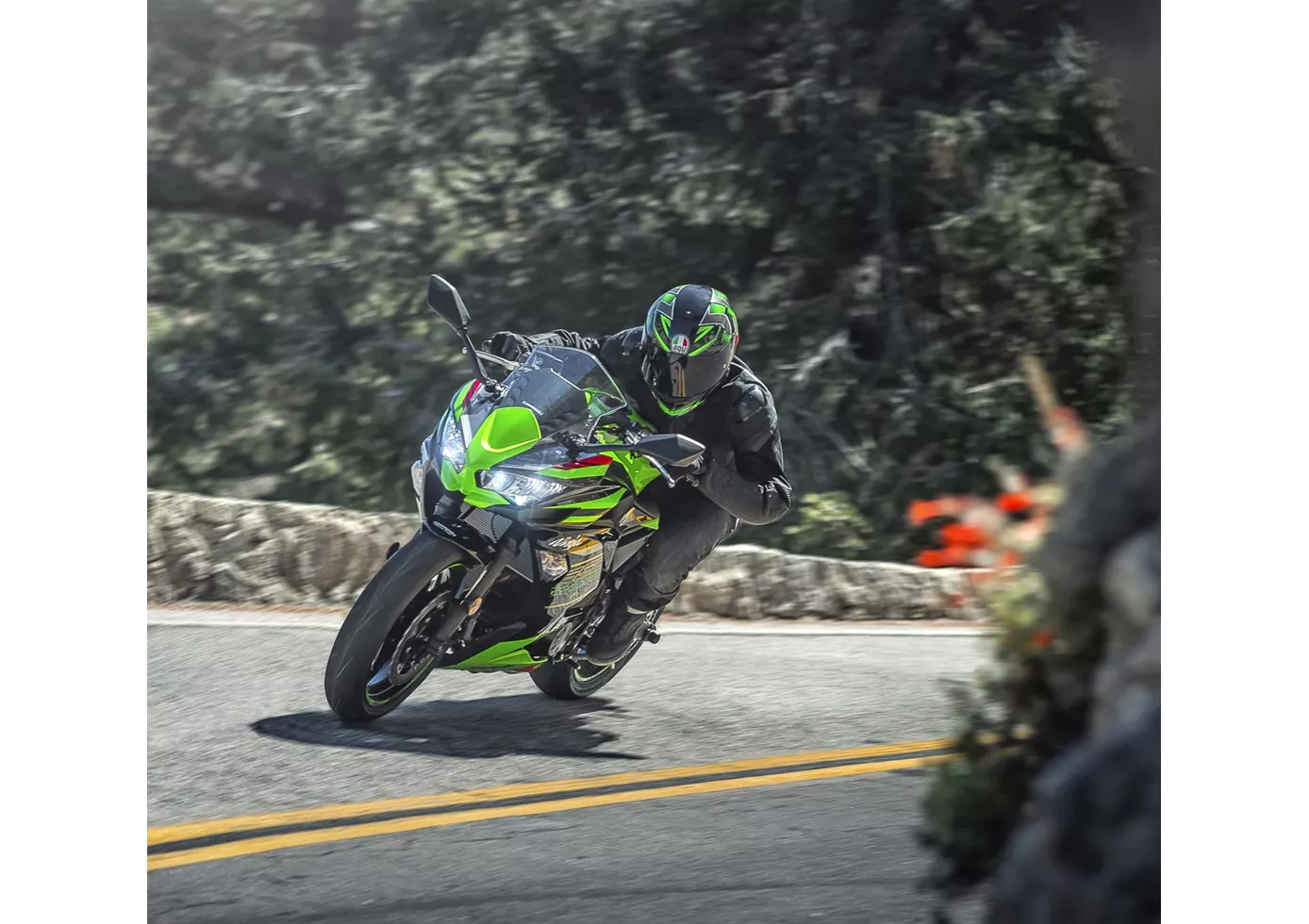
Save the sport tourer! With the Ninja 650, Kawasaki has created an exemplary representative of this class and (hopefully) solved the problem of the new generation. The stable chassis and the decent two-cylinder will delight beginners and advanced riders alike, even at a brisker pace. The front brake is a little too well intentioned, lacking a transparent pressure point despite basically good braking performance. Another plus is the TFT display, which we don't find in the competition at the moment, as well as the grown-up look, which is strongly oriented towards the larger Ninja models.
Kawasaki Z650 2017

The Kawasaki Z 650 is the tip of the middle class for small male and female riders. On its compact dimensions, you probably won't feel comfortable as a giant. Heart-warming feelings, however, come from the engine, which delights with a very smooth pull. On the chassis side, a Kawasaki-typical tight set-up was chosen, which finds a great compromise in everyday use. The negative display is very easy to read and is reminiscent of its predecessor, the ER-6n - very nice!
Price Comparison Avarage Market Price Kawasaki Ninja 650 vs Kawasaki Z650
There are a few key differences between a Kawasaki Ninja 650 2020 and a Kawasaki Z650 2017. In terms of price, the actual average price of a Kawasaki Ninja 650 2020 is about 17% higher. Compared to Kawasaki Z650 2017 there are less Kawasaki Ninja 650 2020 bikes available on the 1000PS.de Marketplace, specifically 10 compared to 11. It takes less time to sell a Kawasaki Ninja 650 with 75 days compared to 76 days for a Kawasaki Z650. Since model year 2017 1000PS.de editors have written 20 reviews for the Kawasaki Ninja 650 and 31 reviews for the Kawasaki Z650 since model year 2017. The first review for the Kawasaki Ninja 650 was published on 10/4/2016 and now has more than 79,600 views. This compares to more than 25,000 views for the first review on Kawasaki Z650 published on 11/8/2016.
